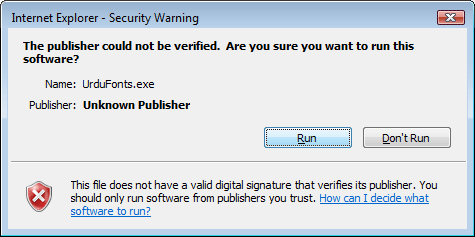Noori Nastaleeq Font For Website


Apex Dc For Windows Xp. Some of my website visitors asked me how to create an Urdu blog on blogger platform or how to use an Urdu font named “Jameel Noori Nastaleeq. Noori Nastaleeq. Just found out that the latest version (3) of the famous Jameel Noori Nastaleeq font for unicode Urdu has been released. It has auto kerning.
Jan 06, 2011 Download Urdu Fonts (Noori Nastaleeq, Alvi & Jameel) Type Urdu in Microsoft Word. Three things are being shared here. [ad#post_ads] 2 of them are font sets.
Jet.oledb.4.0 Windows 7 64 Bit. Persian Chalipa panel,. In print: بودم به تو عمری و ترا سیر ندیدم از وصل تو هرگز به مرادی نرسیدم از بهر تو بیگانه شدم از همه خویشان وحشی صفت از خلق به یکبار بریدم After the, the Iranian Persian people adopted the, and the art of flourished in Iran as territories of the former Persian empire. Apparently, (14th century) developed Nastaʿlīq by combining two existing scripts of and Taʿlīq. Hence, it was originally called Nasḫ-Taʿlīq.
Another theory holds that the name Nastaʿlīq means 'that which abrogated ( naskh) Taʿlīq'. [ ] Nastaʿlīq thrived, and many prominent calligraphers contributed to its splendor and beauty. It is believed [ ] that Nastaʿlīq reached its highest elegance in 's works.
The current practice of Nastaʿlīq is, however, heavily based on 's technique. Kalhor modified and adapted Nastaʿlīq to be easily used with printing machines, which in turn helped wide dissemination of his transcripts. He also devised methods for teaching Nastaʿlīq and specified clear proportional rules for it, which many could follow. [ ] The used as the court during their rule over.
During this time, Nastaʿlīq came into widespread use in. The influence continues to this day. In Pakistan, almost everything in Urdu is written in the script, constituting the greatest part of Nastaʿlīq usage in the world. A Card Merely Thought Of Pdf there.
The situation of Nastaʿlīq in used to be the same as in Pakistan until 1971, when Urdu ceased to remain an official language. Today, only a few people use this form of writing in. [ ] Nastaʿlīq is a descendant of and Taʿlīq.
(literally 'broken Nastaʿlīq') style is a development of Nastaʿlīq. [ ] Notable Nastaʿlīq calligraphers [ ]. Example showing « خط نستعلیق» ( Nastaʿlīq script) written in Nastaʿlīq. • • • • • And others, including Mirza Jafar Tabrizi, Abdul Rashid Deilami, Sultan Ali Mashadi, Mir Ali Heravi, Emad Ul-Kottab, Mirza Gholam Reza Esfehani, Emadol Kotab, Yaghoot Mostasami, and Darvish Abdol Majid Taleghani.
[ ] And among contemporary artists: Hassan Mirkhani, Hossein Mirkhani,, Abbas Akhavein and Qolam-Hossein Amirkhani, Ali Akbar Kaveh, Kaboli. Etiquette [ ] was originally used to adorn Islamic religious texts, specifically the, as pictorial ornaments were prohibited in. Therefore, a sense of sacredness was always implicit in calligraphy. [ ] A Nastaʿlīq disciple was supposed to qualify himself spiritually for being a calligrapher, besides learning how to prepare qalam, ink, paper and, more importantly, master Nastaʿlīq. For instance see Adab al-Mashq, a manual of penmanship attributed to. An example of the Nastaʿlīq script used for writing Nastaʿlīq Typography first started with attempts to develop a metallic type for the script, but all such efforts failed.
Developed a Nastaʿlīq Type, which was not close enough to Nastaʿlīq and hence was never used other than by the college library to publish its own books. The State of Hyderabad Dakan (now in India) also attempted to develop a Nastaʿlīq Typewriter but this attempt failed miserably and the file was closed with the phrase “Preparation of Nastaʿlīq on commercial basis is impossible”. Basically, in order to develop such a metal type, thousands of pieces would be required. [ ] Modern Nastaʿlīq typography began with the invention of Noori Nastaleeq which was first created as a digital font in 1981 through the collaboration of TI (as Calligrapher) and (formerly Monotype Corp & Monotype Typography). Although this was a ground-breaking solution employing over 20,000 ligatures (individually designed character combinations) which provided the most beautiful results and allowed newspapers such as Pakistan's to use digital typesetting instead of an army of calligraphers, it suffered from two problems in the 1990s: (a) its non-availability on standard platforms such as or, and (b) the non- nature of text entry, whereby the document had to be created by commands in Monotype's proprietary. Windows 8 was the first version of Microsoft Windows to have native Nastaʿlīq support, through Microsoft's 'Urdu Typesetting' font. Nastaʿlīq electronic publishing and DTP [ ] In 1994, Urdu, which is a fully functional page layout software for Windows akin to, was developed for Pakistan's newspaper industry.